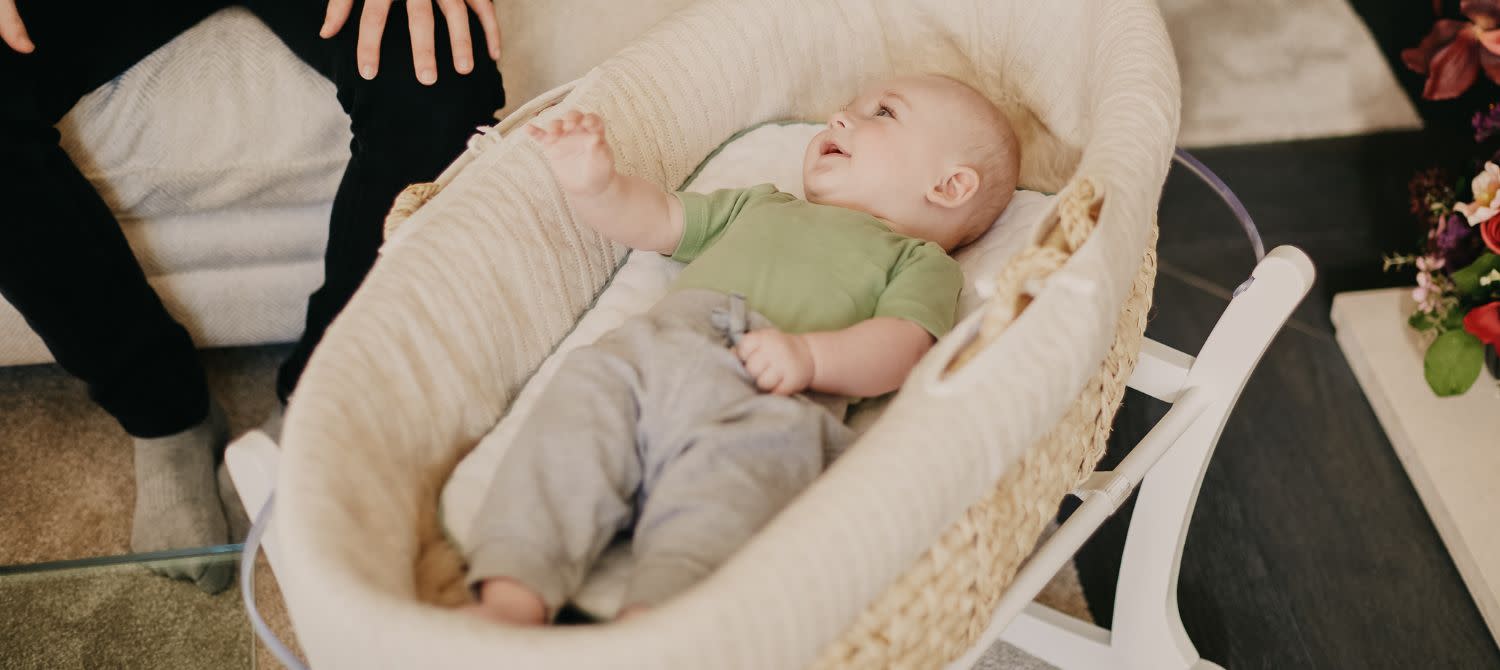Introduction: The Milestone Moment
The transition from a cozy bassinet to a spacious crib marks a significant milestone in your baby’s life. This shift symbolizes growth, independence, and the beginning of new adventures in sleep. As parents, navigating this change can be both exciting and daunting, filled with questions about the right time, preparation, and ensuring a smooth adjustment for your little one. Understanding the developmental cues, safety considerations, and emotional aspects involved in the bassinet-to-crib transition is crucial for a successful process.
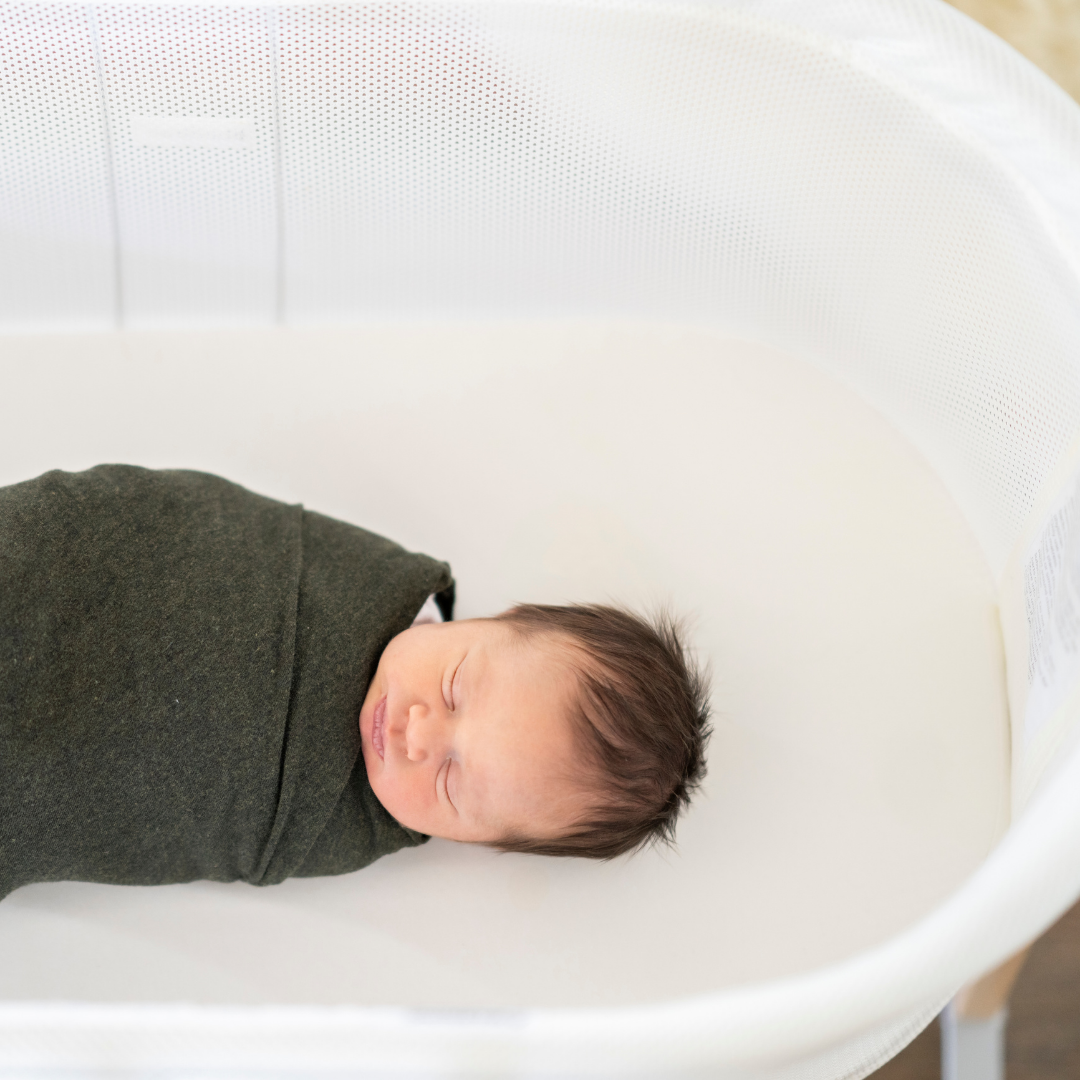
Recognizing the Right Time: developmental cues
Knowing when to make the move from bassinet to crib largely depends on your baby’s physical development and mobility. Most infants are ready for the transition between four and six months of age. By this stage, they typically outgrow their bassinets in terms of size and start showing signs of increased activity. Look for these key indicators:
- Physical Growth: If your baby is starting to feel cramped in their bassinet, frequently bumping into the sides or the top, it’s a clear sign that they need more space. A growth spurt can rapidly change their dimensions, making the once-snug bassinet less comfortable.
- Rolling Over: Once your little one starts rolling over consistently, it becomes imperative to switch to a crib for safety reasons. Bassinets have lower sides that can pose a risk if your baby rolls to the edge during sleep.
- Sitting Up Unaided: When babies learn to sit up unassisted, usually around six months, their newfound mobility might encourage them to try pulling themselves up in the bassinet, which can lead to falls.
- Sleep Patterns: As babies grow, their sleep cycles mature, and they may begin sleeping for longer stretches at night. Moving to a crib can facilitate better sleep quality due to the larger, more comfortable space.
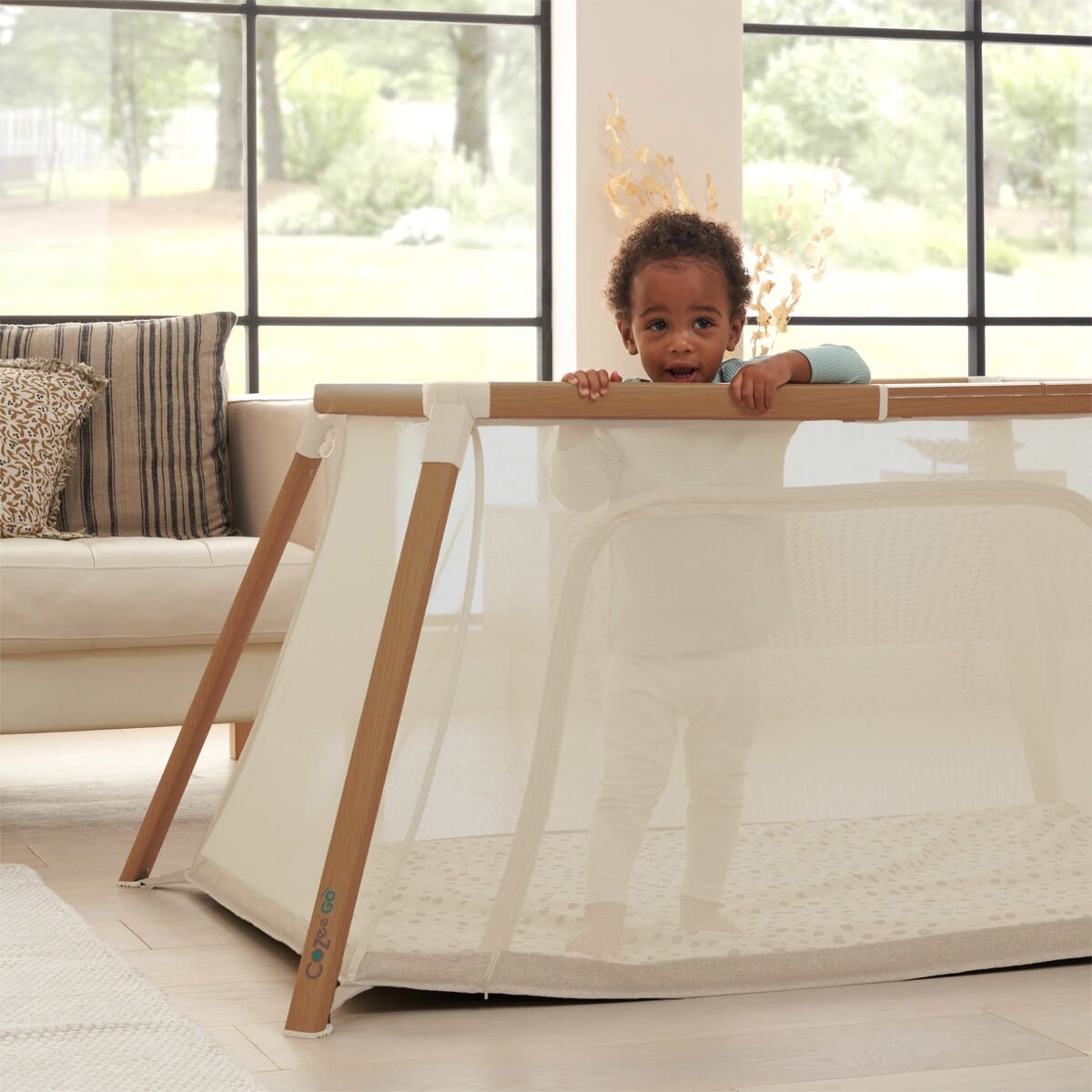
Safety First: Essential Considerations
Safety is paramount when transitioning to a crib. Here are some critical factors to keep in mind:
- Crib Standards: Ensure your chosen crib meets current safety standards set by regulatory bodies like the Consumer Product Safety Commission (CPSC) in the U.S. This includes checking for sturdy construction, non-toxic finishes, and secure assembly.
- Mattress Fit: The crib mattress should fit snugly against the crib walls, leaving no more than two fingers’ width of space to prevent limb entrapment or rolling under the mattress.
- Clear Crib: Keep the crib free from loose bedding, pillows, toys, and bumpers. A fitted sheet is all that’s needed to minimize the risk of suffocation or Sudden Infant Death Syndrome (SIDS).
- Adjustable Mattress Height: Start with the highest setting for easy access, then lower it as your baby learns to pull up, reducing the risk of falls.
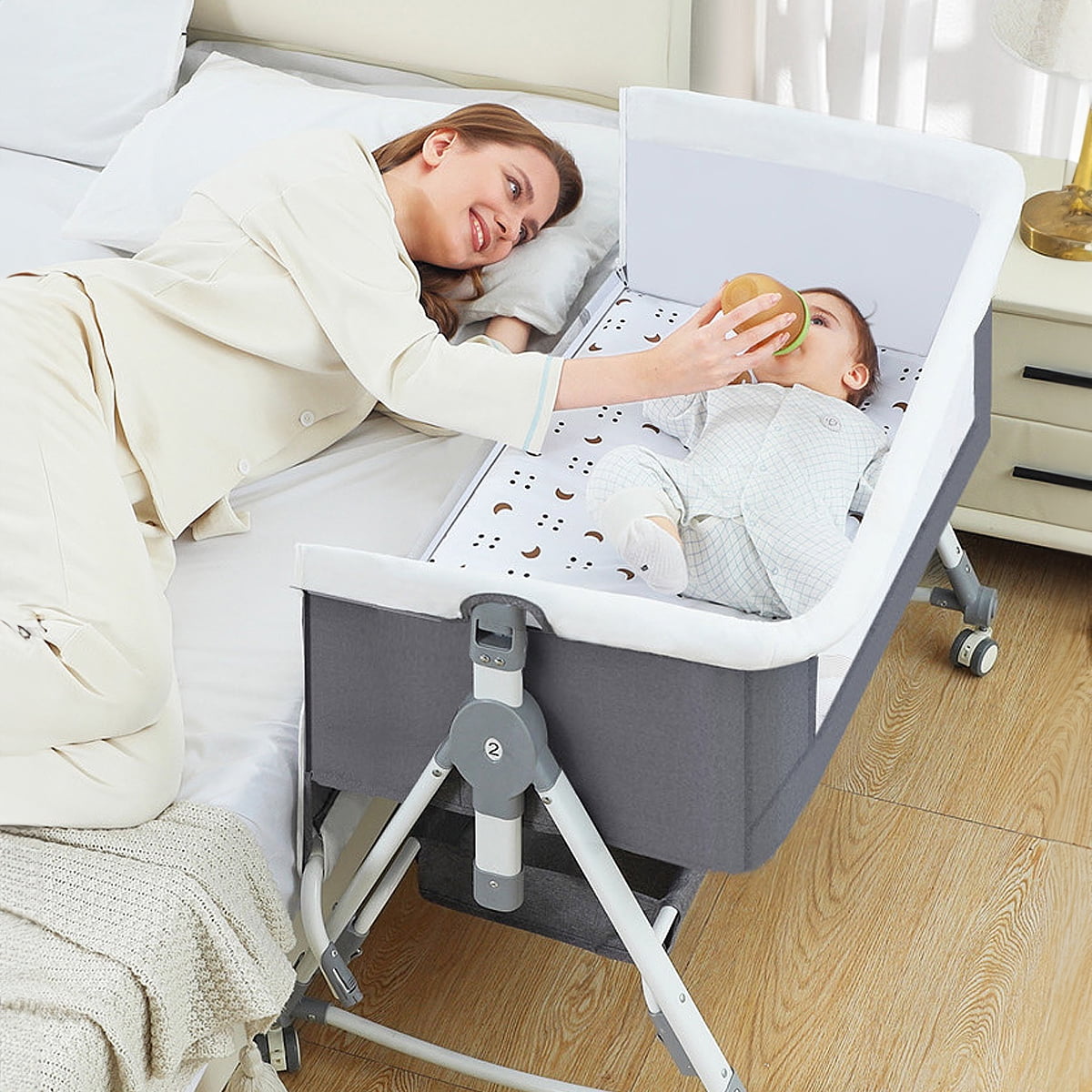
Preparing for the Transition: Emotional and Practical Steps
A smooth transition involves both practical preparations and emotional support for both you and your baby.
- Gradual Introduction: Begin by introducing your baby to the crib during awake times. Let them explore, play, and get familiar with the new environment before attempting naps or overnight sleep.
- Maintain Routines: Stick to your established bedtime routines to provide consistency and comfort. Familiar rituals signal that it’s time to sleep, regardless of the sleeping location.
- Familiar Objects: Use the same blankets, stuffed animals, or any other sleep association items from the bassinet to create a sense of familiarity in the crib.
- Parental Presence: Initially, sitting by the crib or using a calming voice until your baby falls asleep can ease the transition. Gradually increase distance over time until they can fall asleep independently.
- Patience and Persistence: Understand that some resistance or disrupted sleep patterns are normal during this period. Be patient and consistent, and remember that the adjustment period varies for each child.

Addressing Common Concerns: Sleep Regression and Separation Anxiety
Transitioning to a crib might coincide with sleep regression or the emergence of separation anxiety. These developmental phases are natural but can be challenging:
- Sleep Regression: Around four to six months, babies often experience a sleep regression due to developmental leaps. The crib transition might exacerbate this. Maintain consistency in routines and offer extra reassurance to help them through this phase.
- Separation Anxiety: As babies develop a sense of object permanence, they may become anxious when separated from caregivers. Using a soothing bedtime routine and maintaining a consistent response to night wakings can reassure them that you’re nearby.
- Flexibility is Key: It’s crucial to be adaptable in your strategies. What works one day might not the next, so be prepared to try different approaches until you find what soothes your baby best during this transition.
- Monitor and Adjust: Keep an eye on your baby’s sleep patterns and behavior. If you notice persistent difficulties settling or increased fussiness, consider if there are other factors at play, like teething or illness, and adjust your approach accordingly.
- Self-Care for Parents: Don’t forget about your own well-being during this process. The transition can be emotionally taxing for parents too. Ensure you have support systems in place, take breaks when needed, and remember that it’s okay to ask for help.
- Celebrate Small Wins: Each successful nap or night in the crib is a victory worth acknowledging. Celebrate these milestones with your partner or family members, and share your baby’s progress. These positive reinforcements can boost your morale and reinforce the progress made.
- Adjusting Expectations: Recognize that uninterrupted sleep might still be elusive, even after the transition. It’s normal for babies to wake frequently, especially during growth spurts or developmental leaps. Adjust your expectations to accommodate realistic sleep patterns for your child’s age.
- Future-Proofing Sleep Habits: Use this transition as an opportunity to establish healthy sleep habits early on. Encourage self-soothing skills, maintain a dark and cool sleep environment, and differentiate between day and night activities to set the foundation for long-term sleep success.
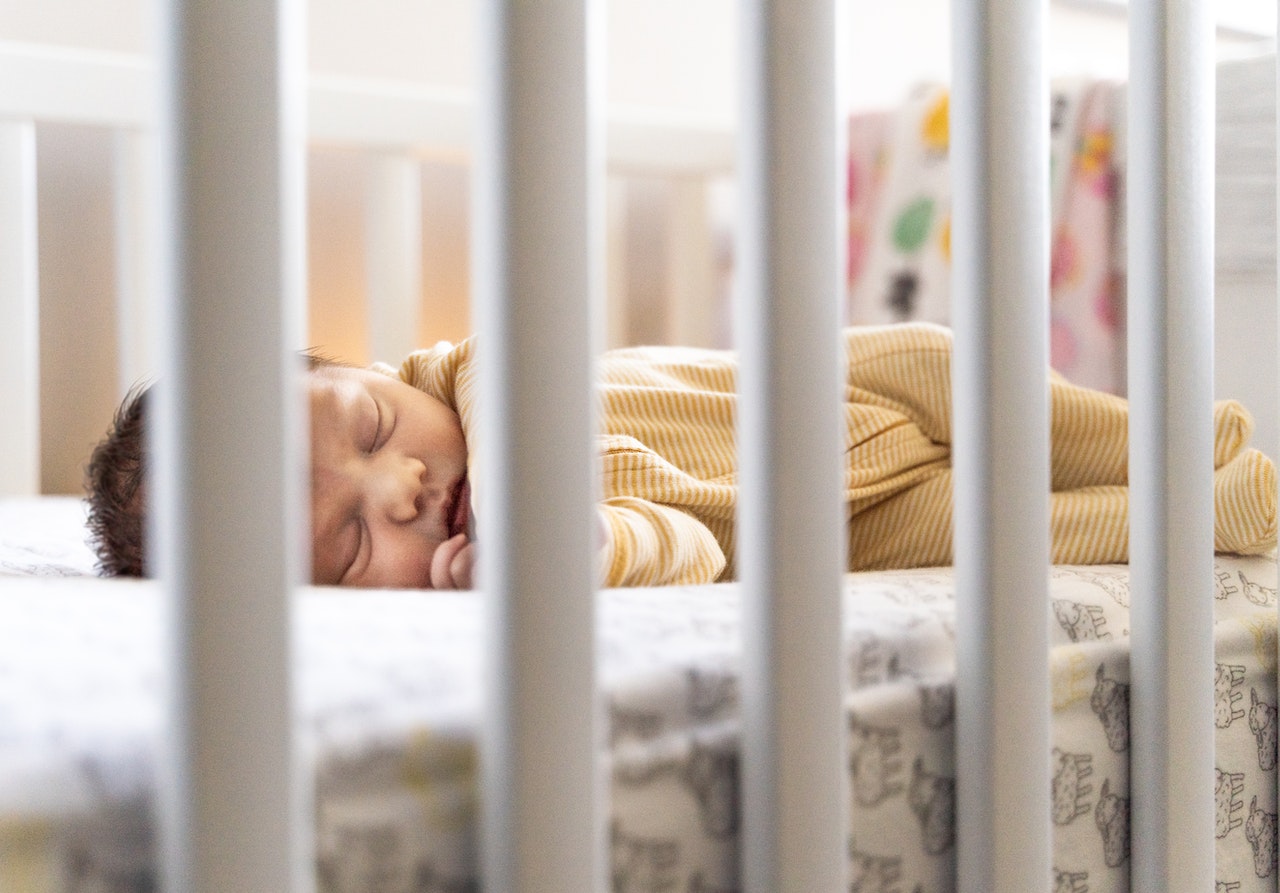
Final Thoughts: Celebrating Milestones and Adjusting Expectations
The move from bassinet to crib is a significant step in your baby’s journey towards independence. It’s a testament to their growth and development, celebrating amidst the challenges. Remember, every baby’s timeline is unique, and there’s no one-size-fits-all approach to this transition.
Stay flexible with your expectations and be prepared to adapt your strategies based on your child’s needs. Embrace the process, taking comfort in knowing that with patience, love, and a few adjustments, your baby will thrive in their new sleeping environment. And as you navigate this milestone, cherish the memories made in the bassinet while looking forward to creating new ones in the crib – a symbol of the many adventures yet to come.
